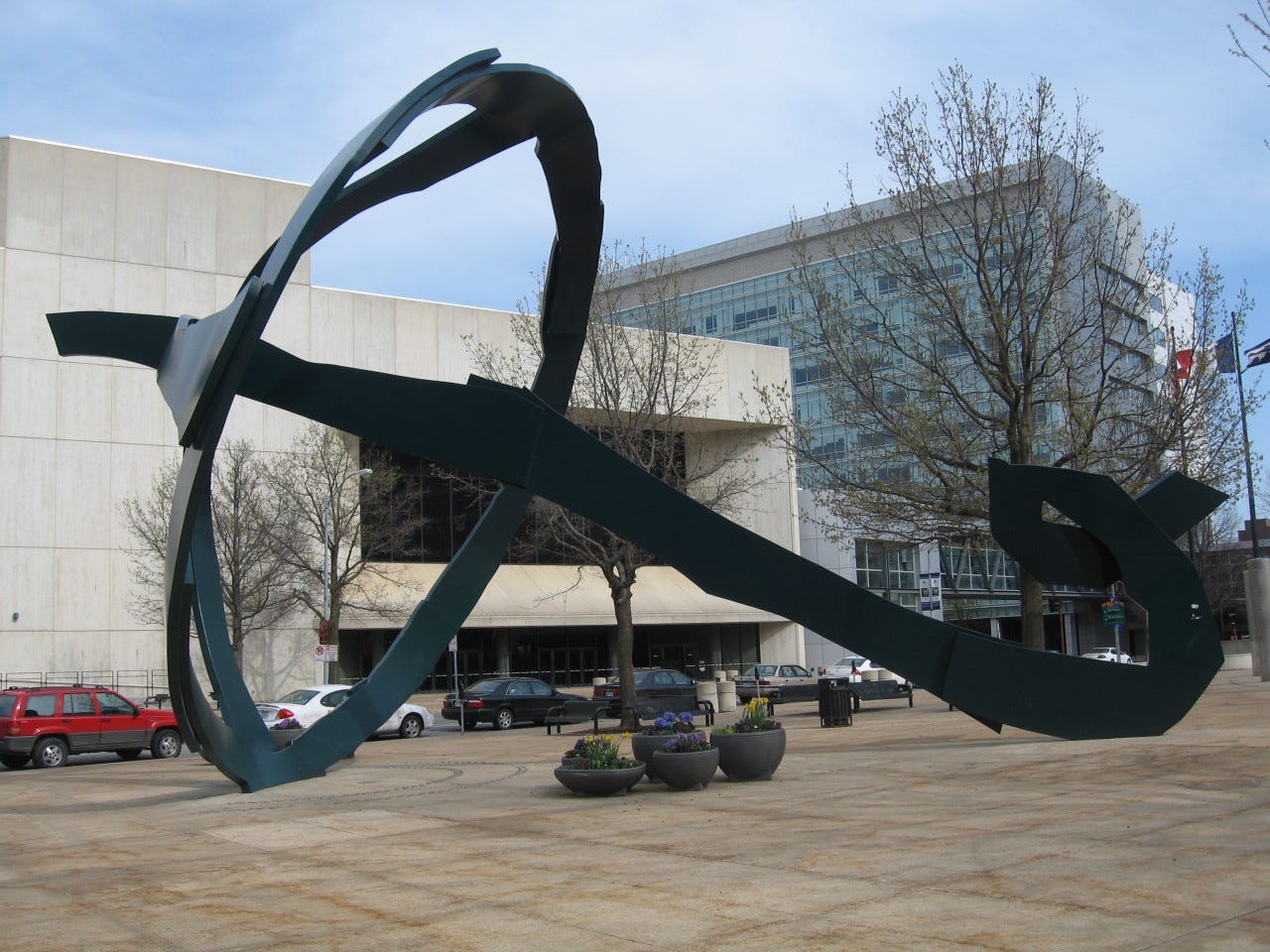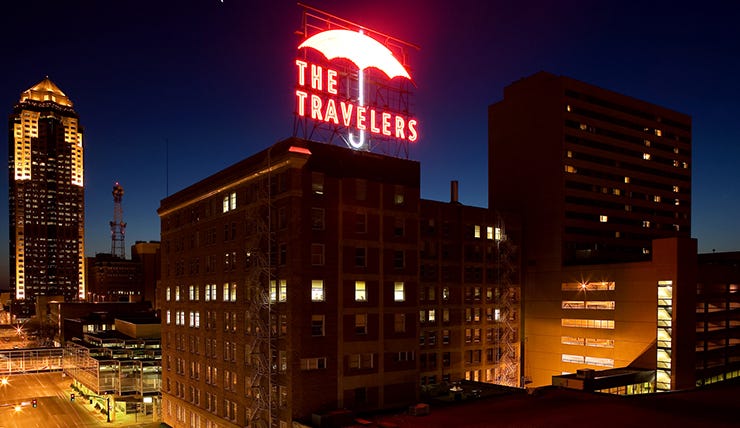Hello Interactors,
This week kicks off the fall series on economic geography. My introduction to economics started with a room full of giggling girls. Its founding began by exploring a common moral sympathy, but it has become anything but. This evolution has been relatively fast; occurring throughout the lives of a rural postman pioneer and his pioneering punch card punching son.
As interactors, you’re special individuals self-selected to be a part of an evolutionary journey. You’re also members of an attentive community so I welcome your participation.
Please leave your comments below or email me directly.
Now let’s go…
STUFF IT
As I walked in the door, the girls awkwardly spun around and grinned with a tinge of embarrassment. And then back to their friends as giggles percolated across the room. I tried to play it cool as the teacher welcomed me and led me to a special desk against the wall. She sat down next to me, maybe a little too eager, and helped me to get started.
It was 1984 and Claus Oldenburg had recently finished a civic sculpture, Crusoe Umbrella, for what was then called Nollan plaza in downtown Des Moines, Iowa. My friend’s dad, Charles “Chick” Herbert, designed the concrete plaza featuring a shallow pool across from his angular stark white Civic Center. The sculpture is an homage to the umbrella Robinson Crusoe built from sticks and plants. Oldenburg thought the plaza looked like an oasis amidst the high-rise buildings in a state that felt like an island in the middle of a continent that most people only see while flying over on their way to New York or Los Angeles.

The neon red animating Travelers Insurance logo atop one of the buildings also served as an inspiration – an umbrella. The curved handle of the base also reminded Oldenburg of a backhoe sometimes seen on the ubiquitous tractors grooming the fields of Iowa. And the long skinny shaft that connected the umbrella to the handle reminded him of the road through downtown Des Moines where he saw High School kids cruise on Saturday nights as they ‘scooped the loop’. I was one of them.

Come Monday it was back to school. For the senior art project we got to choose our own medium for our entries into the spring art show. I had Claus on the brain. In addition to large public sculptures, Claus was also known for his oversized stuffed everyday objects. The Des Moines Art Center collection had one; a massive three-way plug made out of blue vinyl that lazily drooped from the ceiling partially stuffed with filler. I decided I was going to do a giant soft sculpture of my own for the spring show. I choose to make a wall mounted hand-cranked pencil sharpener – a staple of every classroom in those days and a farewell homage to my final year in the Norwalk School District.

Des Moines was home to more than just insurance companies. It’s still a major center for insurance and financial services. And publishing. If you’ve ever flipped through a magazine in America, it was most likely printed by the Meredith Corporation. Growing up it was also home to the farm equipment manufacturer, Massey Ferguson. Through the 1970s their factory made mostly lawn tractors and snowmobiles, but it was also a center for the company’s legal, financial, and marketing departments. My Dad worked there for twenty five years.
You can’t really make a soft sculpture in most art rooms. Their set up for drawing, painting, printing, and ceramics. So during art period, I’d grab my cheap beige muslin fabric from my art locker and walk down the hall by shop class where guys would point at me and laugh as they tinkered with an old clunker locals would donate to the school. I’d proceed through the black double doors, hang a left down a long empty hallway, pause at the door, peek through the relight, and slowly open the door. I’d walk through a class full of giggling girls, sit down to the sewing machine against the wall, and start sewing. The only dude in my four years to ever to set foot in a high school home economics class.
THE ORIENT EXPRESS
The word economics in English-speaking worlds was born out of home economics. There are still hangers-on, like ‘economy sized’ goods at big-box stores or ‘economy-sized’ rental cars. Economizing in this context means to be miserly or frugal. That was certainly what I grew up learning. Both of my parents came from humble beginnings.
My Mom’s mother is the daughter of German immigrants and her father the son of Irish immigrants. Both farming families had to scrape to get by. My Grandmother survived the Spanish Flu; even after caring for parents who both had it.
My Dad was born into the depression in his mother’s bed in 1933. He was the second youngest of twelve. His dad served in both World Wars and was the town postman; he started out delivering mail by horse.

They both lived in a small town in southern Iowa called, Orient. They were born into an era and area dominated by a small scale farming economy. There wasn’t a lot of need to think beyond the economics of the household. Having a large family meant that many more hands for labor. The area was settled by farmers with homesteaded land offered by the government. Orient was mostly there to support the local farmers.
This small Iowa town was founded in 1882 during the great swell of America’s industrial age. It’s marquee feature and primary reason for existence was a grain elevator in the center of town. It was part of the Chicago, Burlington and Quincy Railroad. Also known simply as the Burlington. This company started as the Aurora Branch Railroad and was created by the Illinois state government in 1848. It grew to dominate tracks through western Illinois, southern Iowa, northern Missouri, across Nebraska, and extended its reach far north and west into Montana.
Eight years later, in 1900, the American federal government had traded, stolen, or bought enough land and offered incentives to corporations like Burlington to run trains coast to coast. Their tracks divided herds of buffalo, countless Indigenous communities, and were built on the backs of mostly by low-wage Chinese immigrant laborers.
In 1882, the year Orient was founded, the U.S. government thanked these people by instituting the Chinese Exclusion Act which banned further Chinese immigration and blocked naturalization. It is what started the so-called Yellow Peril – an anti-Asian sentiment that has resurfaced in recent years in the form of racist hate crime.

MORAL UTILITY
By the late 1800s the Western world had been putting theories of division of labor to practice for over one hundred years. It’s what fueled the Industrial Revolution. It all began the same year the U.S. Declaration of Independence was signed in 1776 and the publishing of A Wealth of Nations. This highly influential book was written by a Scottish professor of moral philosophy, Adam Smith.

He was an awkward and absent minded man who is said to have "had a large nose, bulging eyes, a protruding lower lip, a nervous twitch, and a speech impediment." Smith himself agreed he was no looker saying, "I am a beau in nothing but my books."1
Despite his speech impediment and awkwardness, he found success lecturing. He began writing and lecturing on economic topics in 1748, but from a moralistic standpoint. He expanded on what he deemed obvious and simple principles of natural liberty. An idea that had been around since the Greeks; and likely the Zoroastrians before that; one of the longest running religions in the world out of Persia that espouses three core principles I think we can all get behind: Good Thoughts, Good Words, Good Deeds.
Natural liberty, or natural law, was a feature in many Enlightenment thinkers of Smith’s era and is ensconced in the U.S. Declaration of Independence – "all men are … endowed by their Creator with certain unalienable Rights". His lectures also concerned the increasing opulence in England during this period. It led him to write his first book, The Theory of Moral Sentiments in 1759 that explored “moral sympathy” or what today we might call empathy – the capacity of an individual to express sympathy for other members of society.
It was after this that he turned toward more explicitly toward economics and the inclusion, exclusion, and overlap of natural law with manmade legal laws that were beginning to be written by Western societies and nations. He theorized it was the legal power of the state to control labor that brought about wealth, dominance, and control and not the accumulation of silver and gold. It led to An Inquiry into the Nature and Causes of the Wealth of Nations. A book who’s name has shortened over time to the Wealth of Nations.
That book became his most famous and leads many to call Adam Smith the father of the field of Economics. In it he reveals how the division of labor in scaled up industrial enterprises leads to growth and wealth accumulation. By having teams of specialized skilled workers conducting interdependent tasks, industries could scale production more efficiently and profitably – in large part through slave or low-wage labor.
This mechanized view of labor divisions echoed scientific theories and discoveries in biology and physics that would have been swirling around Smith during the Age of Enlightenment. The influence is evident today by looking at the language of economists and business professionals.2 Money flows through economies; especially when there are waves of prosperity. Economics is a mechanism that uses the gravitational pull of consumers and sellers. Unless, of course, there is friction from far away resources or customers. Markets seek equilibrium. So long as we avoid inflation.
Economics can even be described in farming and biological terms. A market can be fertile. Every day on the radio, tv, and social media you hear about the health and growth of the economy. Goods can be in circulation, products can be reproduced; come Black Friday in November consumers will be triggered by herd instincts. In the end, economies are a function of natural selection. Only the fittest companies and strongest governments will survive.
By the late 1800s scientists were on a roll. They had discovered an underlying uniting principle of physics that also unified the discipline: all matter in the universe is connected by a unifying force – energy. The burgeoning field of economics, eager to model itself off science and math, sought their own unifying principle and settled on an economizing word – utility.
ECON ONE-BY-ONE
Prior to the industrial age, the production of goods required the labor of an individual farmer, merchant, blacksmith, baker, carpenter, or cobbler which was harder, slower, and more expensive to scale when demand became greater than supply. To maximize profits, firms had to maximize the utility of their workers. And they did that by creating specialized divisions of labor.
But that quaint image of a farmer and merchant, could be recognized in Orient even when I visited my Grandparents as a kid in the 70s and 80s. It had a single tiny grocery store, a hardware store, and assorted repair shops. Nearly everyone in town had a garden and the city was surrounded by fields and farms of corn, beans, hogs, and heifers. And running straight down the heart of town was a railroad.
Nestled next to it was a grain elevator five stories high that would get filled with area corn and soybeans waiting for the next train to come to haul it away; a cog in a nationwide industrialized economic machine in the middle of small-town Iowa on an island of a state within a vast continental land mass that stretches from sea to shining sea.

The wealth of this nation, in keeping with Smith’s theory, grew from the federal and state laws that, in cooperation and sometimes collusion with private firms, controlled the price of land and labor to build the nation’s largest industries; including the railroads that ran through Orient, the steel used to make the trains, tracks, and railcars that were fueled by what seemed like endless supplies of coal, oil, and gas. Industries also controlled the seed the farmers bought, the fertilizers and pesticides they spread, and the equipment they used to till, plow, plant, and harvest – like Massey Ferguson.
My Dad was a Computer Audit Analyst at Massey Ferguson. He exceled in math, majored in it, taught for awhile, got married to my Mom, and then landed a job in 1969 writing COBOL programs for a small financial software firm in Des Moines. He soon moved to Massey Ferguson where he wrote more COBOL on punch cards. He’d bring them home for me to play with and draw on as a small boy. I can still see them stacked under the piano bench in my room on Jackson street that looked out to the elementary school across the street.
My Mom and Dad and their Mom and Dad bridged generations of economies. My Grandpa Weed was born in 1889. The Ford Motor company was still a twinkle in Henry Ford’s eye. My Mom and Dad were born in the thirties into Franklin Delano Roosevelt’s New Deal Era; when Democrats were the party of protecting people over banks and not the party of protecting banks over people. FDR must be rolling in his grave. He famously quipped, "I took economics courses in college for four years, and everything I was taught was wrong."
By the time I was born, my family had entered the ranks of the middle class FDR had imagined. My parents experienced old-fashioned agrarian economies that even Adam Smith would have recognized. They rose with the White educated middle class and settled into the comfortable suburban sprawl of the post World War boom to raise a family. They witnessed the growth of American industries that cranked out planes, trains, automobiles, and rockets. And, yes, Massey Ferguson tractors, snowmobiles, and riding lawnmowers too.
But my Dad also bridged the industrial economy and the knowledge economy by becoming one of the first software professionals in 1969 as part of a newly burgeoning high-tech industry. Within my lifetime, the lives of my parents, and of theirs the formal discipline of Economics was born overseas, grew larger in America, and has metastasized into a global economic instrument void of any of the moral foundations its founding father, Adam Smith, envisioned. Where’s the empathy? Where is the capacity of an individual to express sympathy for other members of society?

Our world economy has come to resemble the soft sculptures of Claus Oldenburg. A parody of mass production and mass culture that has ballooned to comedic scale and is sagging mournfully from the gravitational pull of its own weight.
Maybe what we need is to step away from our classes, march into the void, open a new door, endure the ridicule and laughter, and sit down to sew us a new moral economy that can be stuffed with good thoughts, good words, and good deeds.
Economic Geography: A Contemporary Introduction, 3rd Edition. Neil M. Coe, Philip F. Kelly, Henry W. C. Yeung. 2019












